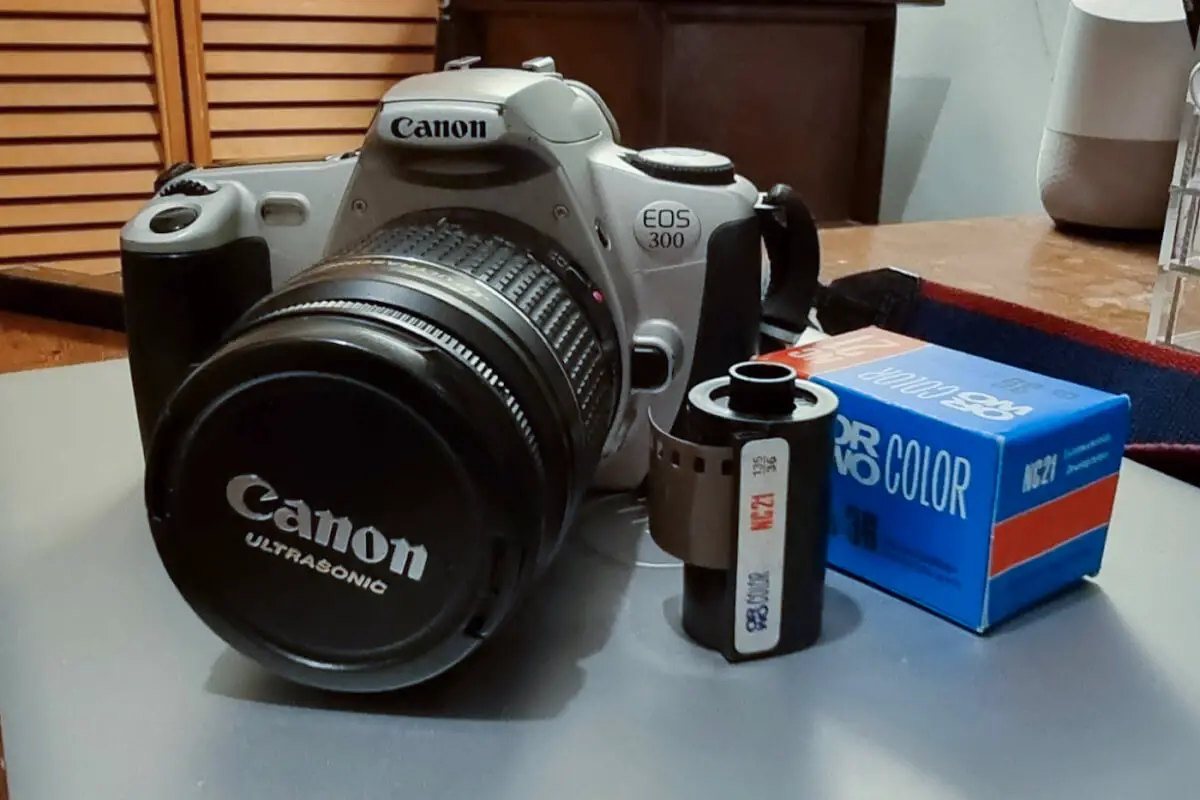Back in the 1980s, I briefly worked for a film processing service in London’s West End. From time to time, people would drop in a mysterious Orwo branded film that our labs couldn’t handle because (they said) it used a strange propriety process that originated “behind the Iron Curtain” and could only be processed there. This, of course, made it immediately desirable by me and was naturally impossible to source and impossible times ten to get processed anyway.
Being a fully paid-up nerd that didn’t stop me wanting some. Well, I got my chance in 1983 on a trip to West Berlin, which involved a hop over the Wall to the East, and some complicated arrangements when I got back. In short, I was able to send the film to the Orwo factory in East Germany and some weeks later got my negatives back. Mission accomplished.
It had an unusual colour palette that I rather liked it but was, I’m told, rather unreliable and varied a lot from batch to batch. It seemed strong on reds though, perhaps to benefit all those revolutionary red flags.

Canon EOS 300 & Orwo NC21 Film
Fast forward some 30-ish years and a pack of ten rolls of Orwocolor NC21 fell into my lap, some of the last of these films ever made before the factory switched to the more conventional C41 process. The film’s native C5168 process had evolved from an early Agfa process similar to C22 and is processed cold at 20 degrees Celcius. Lucky for me, a few specialist labs around Eastern Europe will still process it, so I had a go with a couple of rolls in my Canon EOS 300, initially dismissing the myth of one-stop lost sensitivity for each decade. The result was virtually nothing to see.

No shadow detail / Blue shifted 
Virtually no image 
Blue shifted
OK so maybe it’s not a myth, after all. I next shot the film at EI 50 (1 stop over the film’s native ISO 100), and this time got some decent shots other than fogging at the edges of the film and the frames nearest the leader, where background radiation had more effect over the decades. The deeper wound parts of the film were more protected and clearer.
A springtime walk along London’s River Thames came up somewhat contrasty but acceptable, albeit with gigantic grain. Perhaps next time I’ll shoot at EI 32 or 25 and see what happens. In these pics, you can see the difference between the frame near the leader which features South Bank Centre (#4, very fogged), and the gardens much deeper wound in (#5, hardly fogged at all).
Not bad for film that expired in 1992.

Book market on the riverbank 
The London Eye 
Boat moored on the Thames 
Roof garden at the South Bank Centre 
Tulips in the Embankment Gardens
If you’re curious as to how this East German film looked when exposed new, I’ve uploaded that film I shot in the 1980s onto Flickr: https://www.flickr.com/photos/190936169@N06/albums/72157720043663200 (you’ll need to be signed in to see it).
Thanks for reading!
~ Cliff
Submit your 5 Frames… today
Get your own 5 Frames featured by submitting your article using this form or by sending an email via the contact link at the top of the page.
Share your knowledge, story or project
The transfer of knowledge across the film photography community is the heart of EMULSIVE. You can add your support by contributing your thoughts, work, experiences and ideas to inspire the hundreds of thousands of people who read these pages each month. Check out the submission guide here.
If you like what you’re reading you can also help this passion project by heading over to the EMULSIVE Patreon page and contributing as little as a dollar a month. There’s also print and apparel over at Society 6, currently showcasing over two dozen t-shirt designs and over a dozen unique photographs available for purchase.








One response to “5 Frames…. Of 30 year expired Orwocolor NC21 ISO 100 film at London’s River Thames”
Hi there, great article. Do you mind sharing the names of the labs that still does the C5168 process? It would be much appreciated. Thanks!